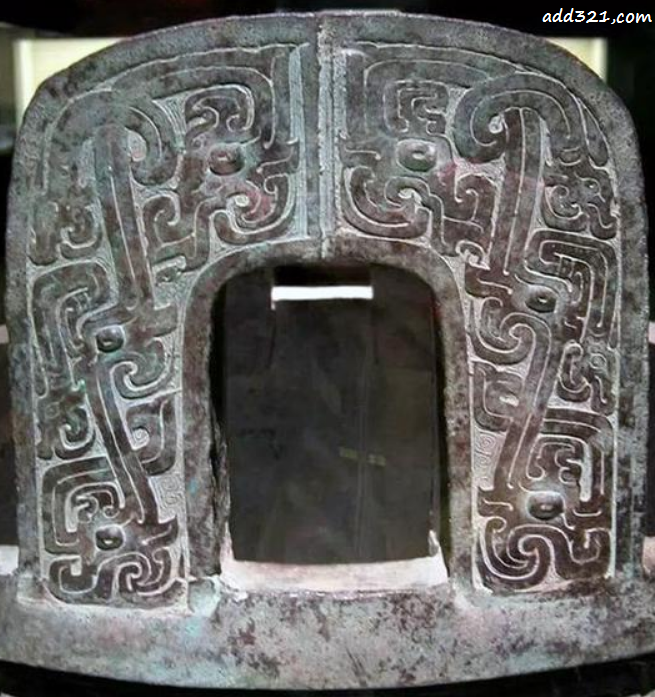

 |
The Da Ke ding (Chinese: 大克鼎; pinyin: Da Ke ding) is an ancient Chinese bronze circular ding vessel from the Western Zhou dynasty (1046--771 BC). Unearthed in Famen Town, Fufeng County, Shaanxi in 1890, it is on display in the Shanghai Museum.
The Da Ke ding, the Da Yu ding in the National Museum of China, and the Mao Gong ding in the National Palace Museum in Taipei have been called the "Three Treasures of China" (海内三宝; 海内三宝).
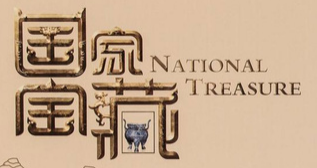
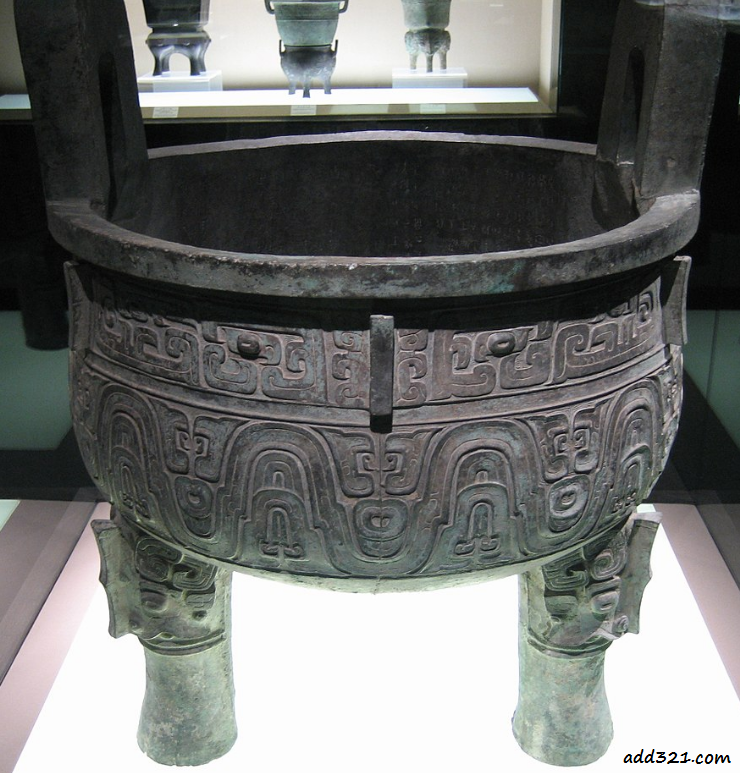
时代: 西周
出土: 陕西省扶风县(1890年)
现藏: 上海博物馆
形制: 大克鼎通高93.1厘米,口径75.6厘米,腹径74.9厘米,腹深43厘米,重201.5公斤。鼎口有大型双立耳,口沿微敛,方唇宽沿,腹略鼓而垂,称敛口侈腹,是典型的周鼎器形之一。鼎足着地点比上端略宽大,重心略向外偏,是商代柱足演变为周代之蹄足的重要例证。
纹饰: 该鼎颈部饰有三组对称的变形饕餮纹,相接处有突出的棱脊,凡六出;腹部饰一条两方连续的大窃曲纹(即波曲纹),环绕全器一周。鼎足上部另饰有突出的饕餮形象三组。鼎耳饰有相对的龙纹。

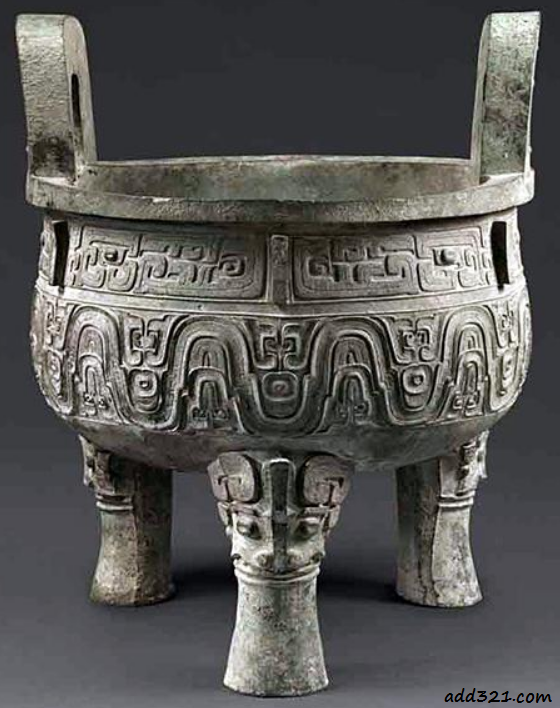
大克鼎,又名克鼎或膳夫克鼎,中国西周晚期著名青铜鼎,现藏于上海博物馆。该鼎与大盂鼎(现藏于中国国家博物馆)和毛公鼎(现藏于台北国立故宫博物院)并称为“海内青铜器三宝”。
铭文: 鼎腹内壁上有金文28行,基本上每行10字,仅一行11字,另有合文2字,重文7字,共计290字。根据铭文记载,该鼎由一位名为“克”的西周贵族铸造于周孝王时。铭文内容分为两段:首段记载了克对其祖父师华父的赞誉,因其功绩,周王任命其孙克担任膳夫,负责出传王命;次段记载了周天子对克官职的册命和赏赐,克接受任命和赏赐,于是铸造此鼎歌颂周天子的美德,同时祭祀祖父的在天之灵。该鼎铭文笔画圆润,布局完整,代表着金文文字发展的新阶段。
Inscription
The tripod has 290 Chinese characters in 28 lines inside the tripod. The inscriptions recorded that the monarch of the Western Zhou dynasty awarded slaves and land to the nobleman, Ke (克).
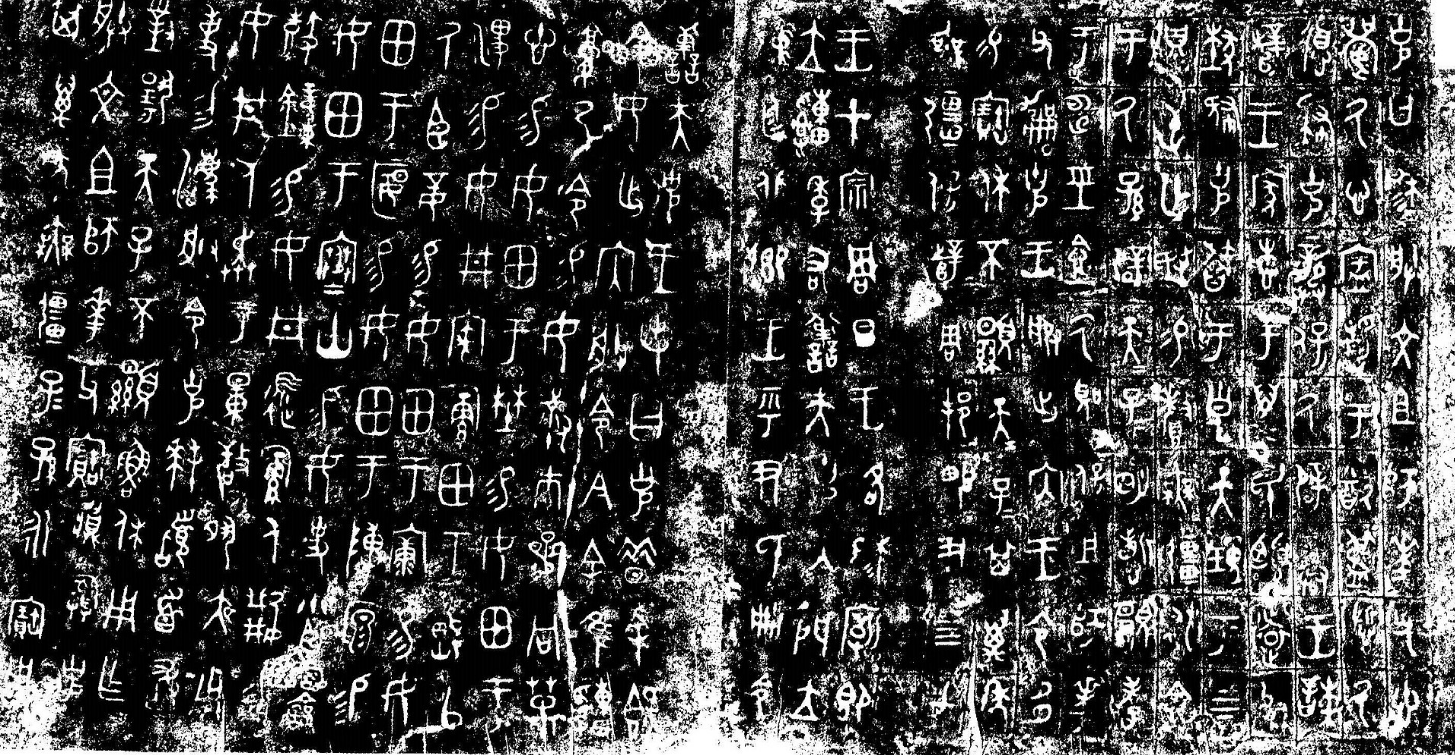
History
In 1890, namely the 16th year of Guangxu period (1875━1908) in the Qing dynasty (1644━1911), the tripod was excavated from a cellar in Famen Town, Fufeng County, Shaanxi, with more than 1,200 bronze wares, including seven Xiao Ke ding (小克鼎) and a set of Bianzhong. After hearing the news, Ke Shaotai (柯劭态; 柯劭态), a Tianjin collector bought it immediately.
Pan Zuyin (1830━1890), a politician and collector spent a huge amount of money on the tripod. Before he bought Da Ke ding, he has already got the Da Yu ding, the largest bronzeware of the Western Zhou dynasty. Therefore, Pan became the top of collectors home and abroad for bronze wares. It's known to the world that three treasures in the world, these two tripods brought great credit to the Pan family.
In 1951, the Shanghai Cultural Relics Management Committee began to organize the Shanghai Museum. After getting the news, Pan Dayu wrote a short letter, intending to donate the two tripods to Shanghai Museum. The Da Ke ding has always been kept there since that time. In 1959, the Da Yu ding was transferred to Beijing and became one of the most valuable treasure in National Museum of China. In March 2004, in order to celebrate Pan Dayu's 100 birthday, the Da Yu ding was transferred to Shanghai Museum for a special and short display. It's their reunion for half a century.

